Are you willing to know about What is Knit Fabric? Knit fabric is one of the most popular types of textile fabric. It is a flexible fabric that is manufactured by looping threads, which are then joined to create a textile structure. Knitting is completed in two different types warp knitting and weft knitting.
Knit fabrics are available in different knit fabric types with various features and can be used to manufacture various textile applications. These fabrics are now fiercely striving with woven fabrics in many garment applications. In this article, I’ll discuss everything about knit fabric that will help you get a clear idea about this fabric.
What is Knit Fabric?
Knit fabric is a textile fabric created by looping and weaving threads together to form a textile structure. As a result, knit textiles are a stretchy fabric primarily used for casual apparel, though they also have many other applications.
Knit fabrics can be made from various fibers, including cotton, wool, silk, polyester, and nylon.
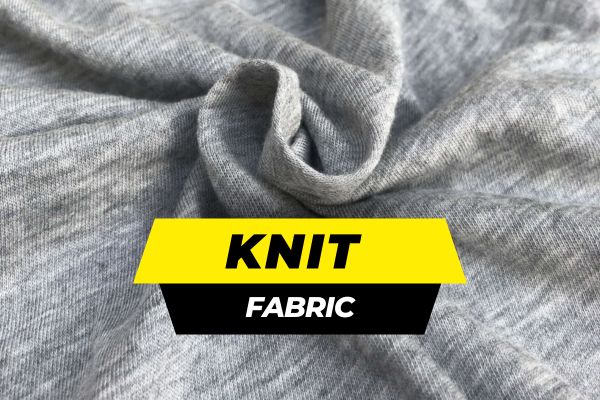
Knitted fabrics are more economical because of their ease of manufacture and rapid turnaround. Compared to woven materials, knit fabric tends to be breathable and cozy to wear. Knit fabric can be used to manufacture different textile applications. This type of fabric is employed in areas where a delicate touch is required.
What is Knit Fabric made of?
Knit fabric is a stretchy fabric created by looping threads and knitting them together to form a textile structure. The yarn or thread can be made from various materials, such as cotton, wool, silk, polyester, or nylon. Depending on the manufacturing material, this fabric is available in different types and has exclusive features.
8 Most Popular Types of Knit Fabrics
Weft-knit and warp-knit are the two basic categories of knit fabrics. Warp-knit textiles are created by interlocking yarn loops straight up and down the fabric, and weft-knit fabrics are produced by interlocking yarn loops horizontally across the cloth. Let’s take a look at some of the popular types of knit fabrics:
1. Double Knit fabric
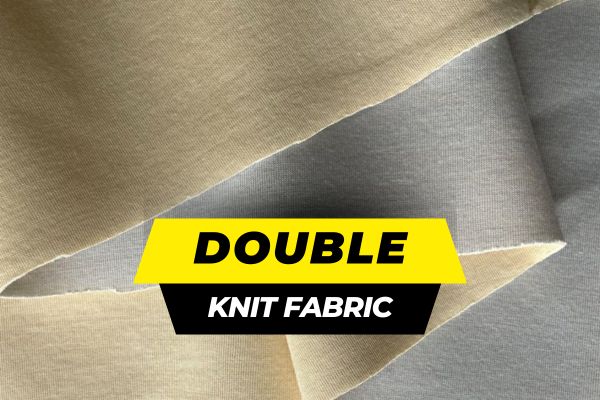
Double-knit fabric is heavier and more stable than single-knit fabrics due to its two layers of knit fabric. Although less stretchy, this fabric can substitute woven fabrics and hold its shape well. The layers can be stitched, knitted, or fused, and it is resistant to unraveling and wrinkling. The thick, sturdy construction makes double knits suitable for outerwear, structured dresses, and skirts.
2. Interlock Stitch Knit
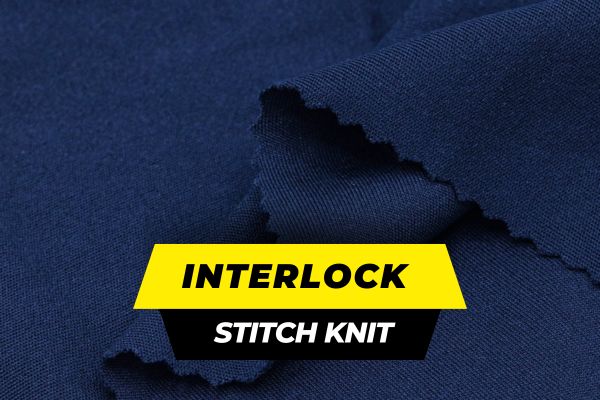
Interlock stitch knit fabric is a knit fabric that has a smooth surface on both sides and is produced by interlocking two ribbed textiles together. Compared to single-knit fabric, this fabric has thicker and heavier features. Interlock knit is the best option for manufacturing structured clothing since it is sturdy and has less stretch than other knit materials.
3. Jersey Knit Fabric

Jersey knit fabric includes prominent horizontal ribs on the back along with conspicuous flat vertical stripes on the front. The flat or jersey knit pattern is widely used because it is quick, affordable, and versatile enough to create elaborately patterned fabrics. This fabric is the most popular knit fabric option for sewing dresses and t-shirts.
4. Purl knit fabric
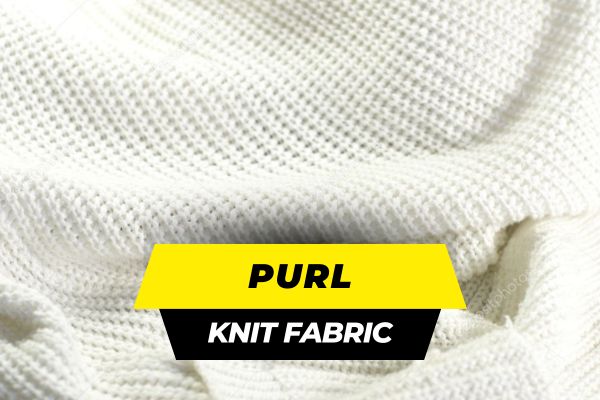
Purl knit fabric is knitted in a different direction, which can only be done with a double-ended latching needle. The fabric has twice the thickness of a single knitted fabric. It has a distinct positive and negative side and is flexible. The most popular applications for this fabric are in knitwear, undergarments, hosiery, etc.
5. Rib knit Fabric
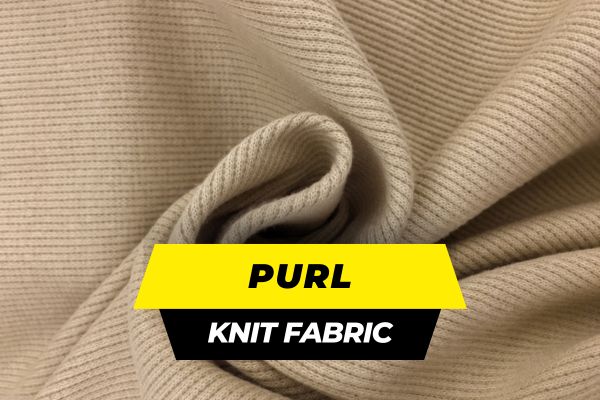
Rib knit is a type of fabric having ribs on both sides with visible, distinct vertical ribs. A reversible cloth with two faces is used to make this knit fabric. Weft knitting is used to create it, which is made up of knit as well as purl stitches alternately on the same row. This fabric can be utilized for sweater waistbands, sleeve bands, neckbands, and other textile applications.
6. Techno knit fabric
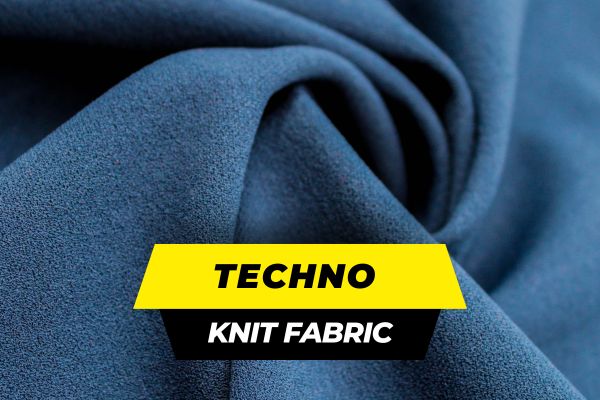
Techno knit is a durable and stretchy fabric that drapes beautifully, perfect for dresses, skirts, lounges, and yoga wear. It’s medium weight with a low sheen, available in solid colors, plaids, animal prints, and floral designs to suit every taste. Techno knits are comfortable to wear and can withstand everyday use, washing, and drying.
7. Tricot Knit Fabric
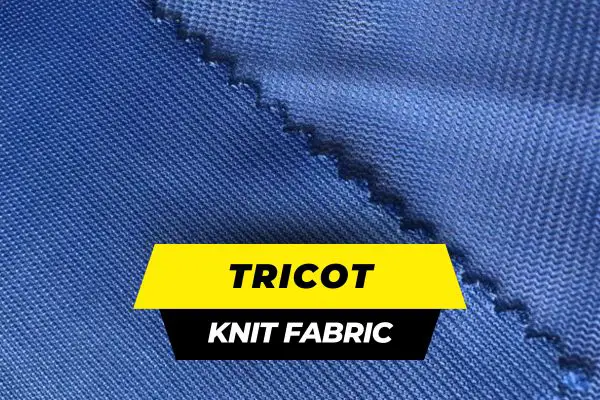
Tricots are lightweight knit featuring horizontal rib stitches on the opposite side and transverse rib stitching on the right side. They are composed of synthetic fibers. Tricot is primarily utilized for lingerie along with various lace fabric kinds, and it may be knitted as either a more opaque, medium-weight knit or one that is pretty translucent and light.
8. Warp Knitted Fabric
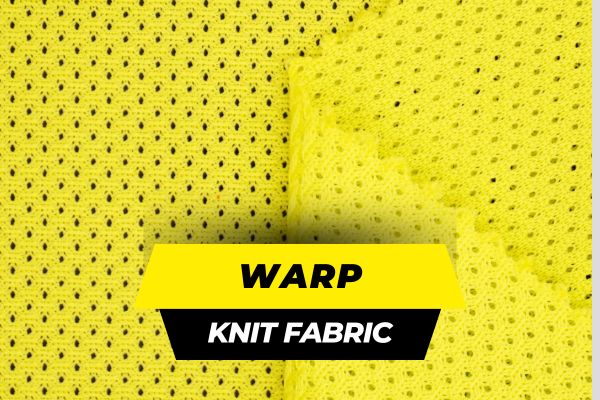
Warp-knitted fabrics are created using a specialized machine and multiple yarns, with loops forming in adjacent Wales. The fabric can be identified with such a pick glass and features preferring vertical knitting loops on the face and inclined horizontal floats on the back. They don’t unravel and are constructed with yarn loops formed in a vertical or warp direction.
Properties of Knitted Fabrics
| Fabric Name | Knit Fabric |
| Manufacturing Materials | T-shirts, sportswear, sweatshirts, underwear, leggings, socks, etc. |
| Fabric Durability | Highly Durable |
| Fabric Breathability | Excellent |
| Fabric Flexibility | Different |
| Fabric stability | Highly Flexible |
| Fabric Drapeability | Variable |
| Fabric Softness | Excellent |
| Fabric Stretchability | Variable |
| Fabric Comfortability | Excellent |
| Prone to Bubbling | Low |
| Applications | T-shirts, sportswear, sweatshirts, underwear, leggings, socks, etc. |
Characteristics of Knit Fabric
Knit fabrics come with several advanced and exclusive characteristics. Let’s explore some of the characteristics of knitted fabrics in detail.
a. Durable and Breathable
Knit fabric is resilient to wrinkles and long-lasting; it maintains its form and color for an extended period. This cloth is incredibly breathable and has a lovely touch. Knitted clothing allows the body to circulate air in the summer and keeps you warm in the winter.
b. Stretchy and flexible
Knit fabric is highly flexible. It can stretch in both breadth and length since it is made of a series of loops. This kind of fabric is ideal for form-fitting garments without zippers. Knit fabric’s flexible and unstructured structure allows it to stretch as well as a drape over most shapes and adhere to their contours.
c. Tear Resistance
The knitted fabrics feature excellent resistance to creasing. This is caused by the way such materials’ loops are arranged. The loops serve as reversing hinges at their outer edges when folded. Knitted textiles have a high rip resistance because the loops, which are extensible, distribute the tension over the whole fabric.
d. Versatile Fabric
Knit fabric is a versatile fabric that is available in different types. Double Knit, Jersey Knit, Rib Knit, and Tricot Knit are some of the most popular knit fabrics. These fabrics can have a variety of textures depending on the type of knit and the fiber used. Knit fabric can be used to create a wide range of garments and accessories, from t-shirts and dresses to hats and scarves.
e. Easy to maintain
Knit fabric is generally easy to care for and can often be machine washed and dried. Knitted clothing doesn’t need much specific maintenance, such as hand washing, and can be readily machine cleaned. Since this fabric type often resists wrinkles, ironing is not necessary.
Knit Fabric Applications
Knit fabrics have a wide range of applications and are used in various industries, including fashion, sports, and home decor. Here are some typical applications of knit fabrics:
- Clothing: T-shirts, sweaters, dresses, leggings, and underwear.
- Sportswear: Compression garments and athletic socks
- Home decor: Blankets, throws, and cushions.
- Medical: Compression garments, orthopedic supports, and prosthetics.
- Automotive: Seating fabrics, headliners, and interior trim.
FAQ’s
What type of fabric is knit fabric?
Knit fabric is a fabric that is manufactured by interlocking a series of loops of yarn together. This fabric has a unique structure that allows it to stretch and recover. This fabric is excellently comfortable and ideal for use in various garments such as t-shirts, dresses, sweaters, and activewear.
Is knit fabric suitable for summer?
Knit fabric, like Jersey knit fabric, is mainly manufactured with wool. Some of the Jersey net fabrics are manufactured with a combination of Cotton, wool, and synthetic materials. These fabrics come with highly flexible and excellent comfort features, making them best for summer.
Is knit fabric ideal for winter?
Knit fabrics can be made from various materials, ranging from natural fibers to synthetic fibers. Knit fabric is often used for warm winter garments like sweaters and scarves because they have insulating properties and can trap heat. This fabric is also lightweight and breathable, making it suitable for year-round use in various garments and accessories.
How should knit fabric be cared for?
Knit fabric should be cared for according to the care instructions on the garment label. In general, it can be machine washed and dried, but it should be washed in cold water and dried on a low heat setting to prevent shrinking.
Conclusion
In conclusion, now you may get a clear idea of knit fabric. Knit fabrics can be produced significantly more readily, swiftly, and affordably than woven fabrics. This fabric is available in different types, and each and every kind of knit fabric comes with diverse features. Knit fabrics are highly flexible as well as comfortable, which makes these fabrics suitable for manufacturing different textile applications.
